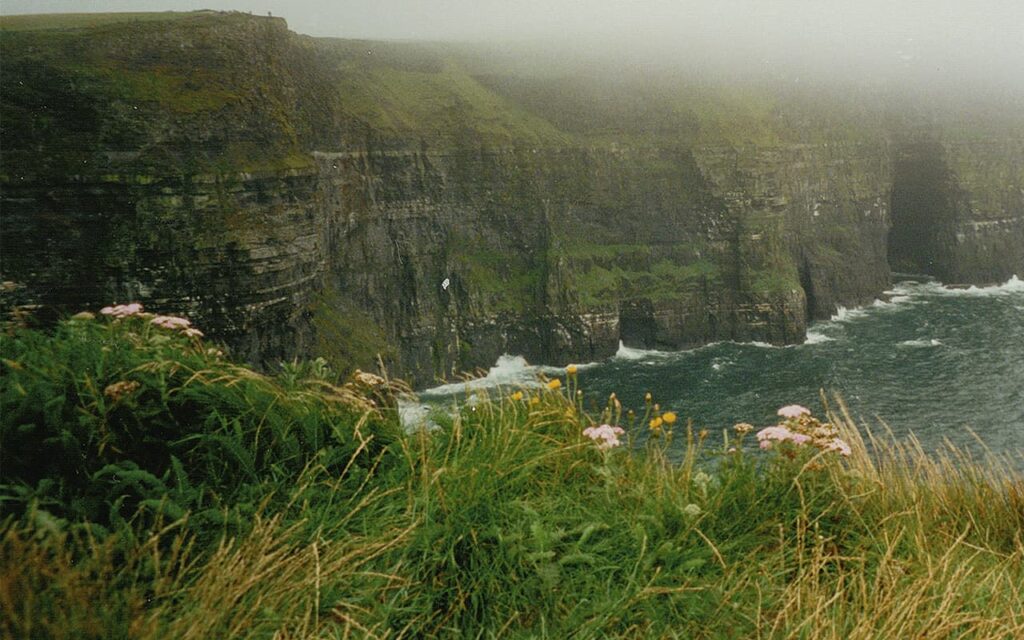The education and leading role of the clergy was somewhat shaken in the 10th century, when the Vikings began to disturb the Irish coasts with their raids. They began to establish urban settlements on the coasts (Dublin and Limerick in particular were founded by the Vikings), giving port cities to a hitherto almost exclusively rural Ireland, and effectively creating the means for independent maritime trade. Many monasteries, especially those on the coast and those on islands, were looted and burned, though not completely destroyed as had happened in England around the same time. The monasteries near Dublin coexisted quite peacefully with the Viking city, maintaining their status as a stronghold of learning and religiosity. The Viking invasion of Ireland also affected the language – some basic words of the Irish language related to the sea and ship navigation are of Scandinavian origin.
In the early 11th century, the Irish under the leadership of High King Brian Boru defeated and expelled the Vikings, with Brian Boru himself dying in the decisive battle of Clontarf in 1014.
The island was then divided into five kingdoms: Leinster, Munster, Ulster, Connacht and Meade, each of which was subdivided in turn into secondary realms of individual clans under dependent chieftains.
The conquest of part of Ireland by England
Frequent internecine warfare contributed to the feralization and disunity of the island’s population, rendering them unable to resist foreign invaders. Dermod, king of Leinster, abducted his wife from O’Rourke, chief of one of the Mide tribes; for this, with the help of the paramount Roderich O’Connor, he was driven from his dominions and in 1167 went to seek help in England.
King Henry II Plantagenet of England, who had long since, with the consent of Pope Adrian IV, plotted the conquest of Ireland, commissioned in 1169 some of his barons, including Maurice Fitz-Gerald, first of all to restore Dermod to his dominions; then, when the Earl of Pembroke, sent by him, occupied Waterford and Dublin, he himself appeared in Ireland in December, 1171. As his conquest rested on a papal bull, the clergy submitted especially easily to him. The rulers of Leinster and Munster soon submitted to English rule, and in October 1175 Roderick, after stubborn resistance, had to agree to a treaty by virtue of which Henry received the eastern and he the western part of the island; at the same time he had to recognize himself as a vassal and tribute of the English crown.
The English barons took possession by force of the lands given to them as fiefs, expelled the native chiefs, and introduced English laws and government. The area thus conquered was called the pale, and both in its administration – the royal viceroy and its own parliament – and in its further development, it differed sharply from the far superior to it space not yet conquered, the so-called Wild Ireland, in which the English were constantly striving to make new conquests.
